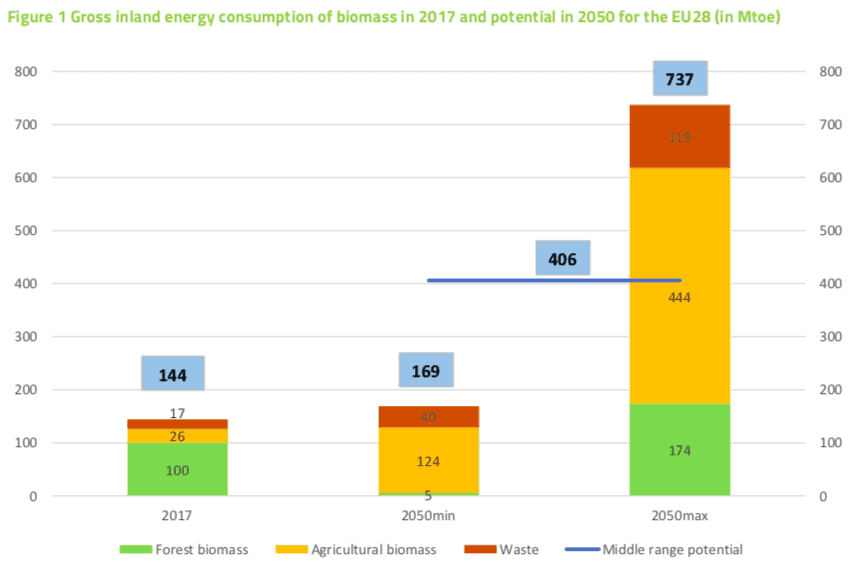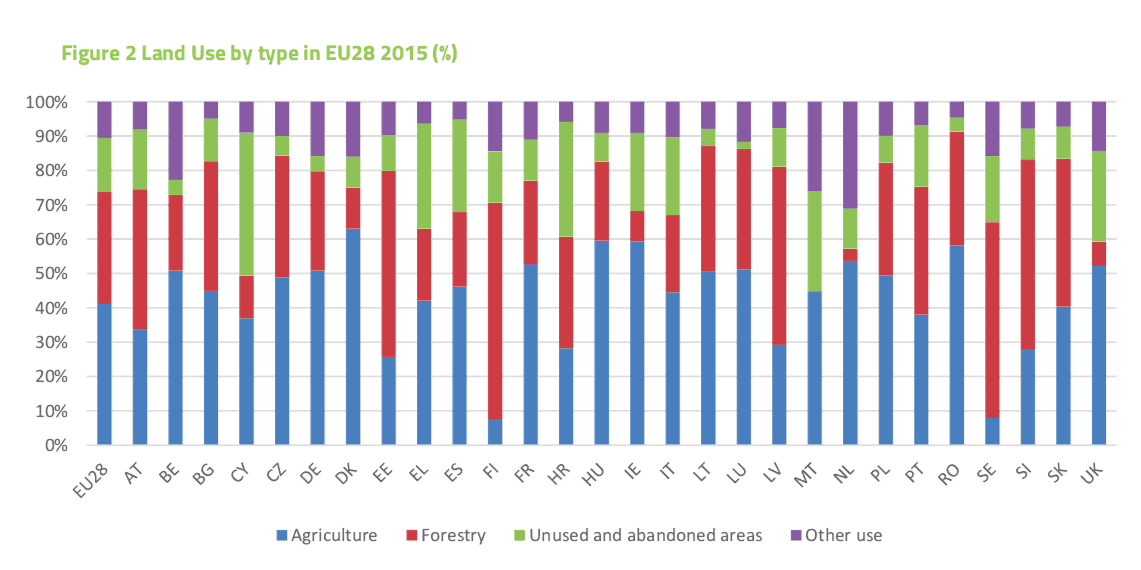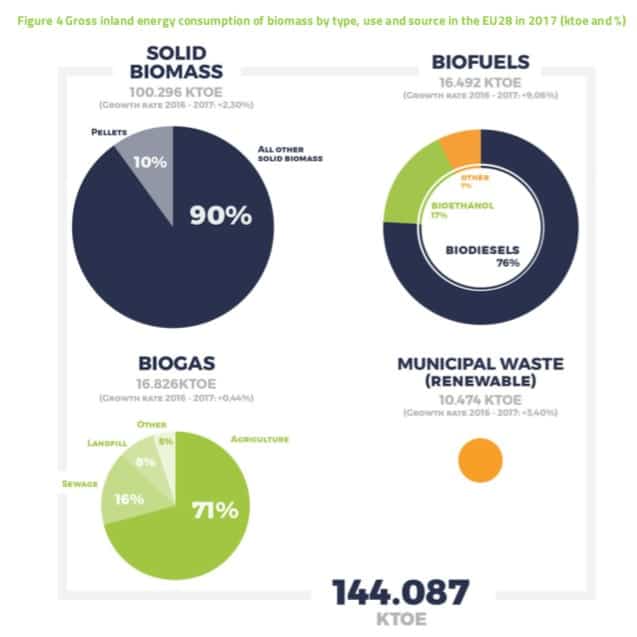For almost a decade, the Bioenergy Europe Association has released a detailed statistical overview of the bioenergy sector within the EU-28 Member States. Not only does it show how the biomass supply chain evolved over the last years, but also its fast-growing potential. A thorough analysis of the Report allows both firms and individuals to assess how the bioenergy sector will eventually prevail over the current, unsustainable energy suppliers.
What is biomass?
The Report considers biomass as any organic matters from plants or animals and is thus a renewable energy source. It highlights that biomass supply for energy can be in solid, liquid or gaseous form including or not fuel processing steps. Biomass can be collected from many sources as for examples:
- Forests, such as firewood or logging residues.
- By-products of the wood industry (e.g. bark, saw dust, shavings, black liquor).
- Energy crops (e.g. arable crops: cereal or oil based; perennial lignocellulosic crops: woody and grassy).
- Agricultural by-products (e.g. straw, manure, orchards pruning, pruning).
- Biomass supply from waste streams (e.g. municipal waste, animal by-products).
- By-products from agro-food industry.
- Aquatic biomass supply (algae).
What is the future of biomass supply?

The Report shows calculations based on studies regarding the domestic availability potential for biomass supply for energy to be between 169 and 737 Mtoe each year in Europe from 2050 onwards. A literature review concludes that the middle range potential of 406 Mtoe, which is around 24% of the total energy consumption in EU-28 in 2017, can be achieved by 2050 – considering different constraints (e.g. costs). This means that, compared to the actual 144 Mtoe used in 2017, the potential gives enough room to almost triple the amount of bioenergy in the EU-28 energy mix.
Space availability for biomass supply production
The availability and use of existing land are always a recurring question. The ‘biomass dilemma’ is a topic that has challenged the bioenergy enthusiasts, as it has been argued that food crops should not be used for sustainable energy sources, as hunger and starvation is still an existing issue in the 21stCentury. Until that is solved, food crops must be used for consumption, whilst arable agricultural land should also be exploited for edible plants. Marginal and unused land could be a solution, but energy crops that would survive and perform effectively in those soils are very uncommon. A good example of a crop that tolerates marginal land with high yields of biomass is Arundo donax, surviving varying pH content, soil pollution and contamination and even salinity.

The Report shows that unused and abandoned areas represent 15,8% of the total land use in the EU28 which is significant amount of land that could potentially be used to grow energy crops. Croatia, Greece, Spain or the United Kingdom present high percentages of unused and abandoned areas (>25%). Additionally, Cyprus and Malta also have high shares of unused and abandoned areas, but the absolute figure is rather small. In absolute terms the countries showing the biggest unused and abandoned area are Spain, Sweden, Italy, France and the United Kingdom. Regarding the forest area proportions within the total area, Finland, Sweden and Slovenia are the top three countries while, in absolute terms, the top 3 with the largest forest area are Sweden, Finland and France.
Distribution of biomass feedstock for energy

There are three main ways of utilising biomass within the renewable energy sector; solid biomass, biofuels and biogas. The principle and possibly the most convenient output of biomass are pellets with 10% of the total solid biomass produced in 2017. These small, compressed and easily storable energy products can be accessed by any households without the need of significant investments. The race for popularity is very tight between biogas and biofuels. The larger proportion of biogas is produced from agricultural supplies – where it is common to utilise and mix both waste and energy crops to increase yield and sustain a steady output. Whereas for biofuels, biodiesel has the advantage with 76% over bioethanol’s 17%, but the growth in quantity demanded foreshadows a bright future for the bioethanol industry.
Source: Bioenergy Europe (2019) Report: Biomass Supply







